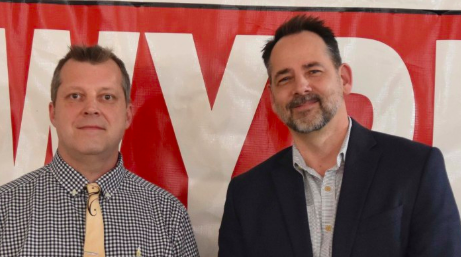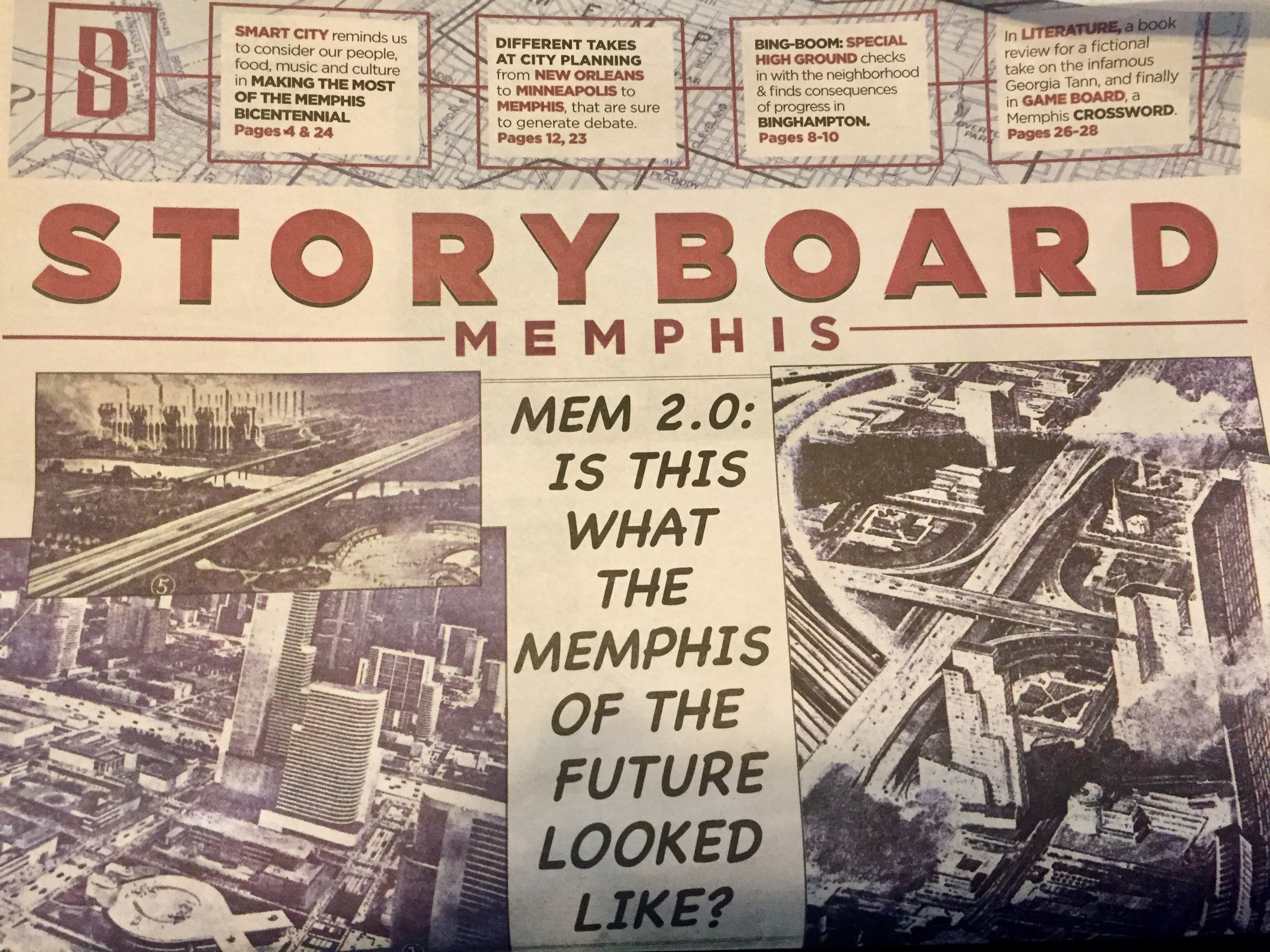Newspapers and Magazines
ANIMAL WORLD: 454-0807.
Monthly publication devoted to animals. Annual subscriptions are $28. theanimalworld.org
AT HOME TENNESSEE: 684-4155.
This monthly magazine covers home interiors in the Memphis area. A one-year subscription is $20. athometn.com
THE BARTLETT EXPRESS: 388-1500.
This weekly newspaper covers Bartlett and Arlington. A subscription is $22 for one year. bartlettexpress.com.
BEST TIMES: 458-2911.
Published monthly, “Best Times” provides news, consumer information, entertainment, and resource guides for seniors in Memphis and Shelby, Fayette, DeSoto, Tipton, and Lauderdale counties. The subscription rate is $20 per year. Besttimes.com
THE COLLIERVILLE HERALD: 853-2241.
This weekly newspaper covers Collierville, Byhalia, Cordova, and Germantown. A subscription is $18 per year for Collierville residents and $22 for outside the town.
THE COLLIERVILLE INDEPENDENT: 853-7060.
This weekly newspaper covers Collierville, Rossville, Piperton, Moscow, Eads, Fisherville, Byhalia, and Cayce. A subscription is $9.36 per year inside Collierville.
THE COMMERCIAL APPEAL: 529-2211.
A member of the Scripps Howard group, “The Commercial Appeal” covers local, state, national, and international news. Rates for home delivery every morning are $18.69 per month, $15.44 Wednesday through Sunday, and $11 Sundays only. commercialappeal.com
THE CORDOVA BEACON: 388-1500.
Weekly paper covering Cordova. A year’s subscription costs $22.
COTTON GROWER MAGAZINE: 756-8822.
A free publication covering the cotton industry for growers, ginners, and other industry players for more than a century. Mail subscriptions only.
THE COVINGTON LEADER: 476-7116.
This biweekly newspaper covers Tipton County. Subscription rates are $36 per year for in-county and $47 for elsewhere in Tennessee; $74 outside Tennessee. covingtonleader.com
THE DAILY NEWS: 523-1561.
Published Monday through Friday, except for legal holidays, “The Daily News” contains general news with a focus on legal notices, business, and finance. Subscription costs are $69 for six months and $99 for one year. memphisdailynews.com
THE DESOTO COUNTY TRIBUNE: 662-895-6220.
This weekly newspaper covers DeSoto County, Mississippi. Subscriptions are $18 per year for in-county; $16 for senior citizens in-county. dctribune.com
THE DESOTO TIMES TODAY: 662-429-6397.
This daily newspaper covers DeSoto County in Mississippi. Subscription rates are $20 every three months, $35 for six months, and $49 for a year. desototimes.com
THE EAST SHELBY REVIEW: 872-2286.
This weekly newspaper reports the goings-on of Eads, Lakeland, Brunswick, Bolton, and Arlington. A year’s subscription is $22.
EDIBLE MEMPHIS: 552-4742.
Quarterly devoted to regional foods and farmers. A year’s subscription is $28. ediblememphis.com
THE EVENING TIMES: 870-735-1010.
This daily newspaper covers the West Memphis, Arkansas, and Crittenden County area. Subscription rates are $75 per year for area residents and $93.50 per year for those outside the area. theeveningtimes.com
THE FAYETTE COUNTY REVIEW: 465-4042.
A weekly devoted to news and information related to Fayette County. For those inside Fayette County, a one-year subscription costs $18. fayettecountyreview.com
GAZE: 229-5877.
Free monthly newspaper covering the gay and lesbian community. gazememphis.com
THE GERMANTOWN NEWS: 754-0337.
This weekly newspaper focuses on news pertinent to the Germantown community. A one-year subscription is $25. germantownnews.com
GRACE: 579-9333.
This bimonthly publication’s mission is to offer a positive voice for African-American women in Memphis and the issues that concern them. Subscriptions (six issues) are $21.95. gracemagazine.com
HARDWOOD MARKET REPORT: 767-9126.
Weekly trade publication. Subscription are $230. hmr.com
THE HEBREW WATCHMAN: 763-2215.
A weekly publication featuring local, national, and international news of Jewish interest. Subscription costs are $25 for one year.
JABBERBLABBER: 725-2223.
A free monthly publication designed to foster the creative skills of children through a variety of art projects. jabberblabber.com
JACKPOT MAGAZINE: 662-363-3637.
A bimonthly magazine providing the latest information on Tunica County casinos. Subscription rates are $30 for six months, $50 for one year. jackpotmagazine.com
JUSTINE MAGAZINE: 761-2845.
A bimonthly publication geared toward teenage girls. A one-year subscription costs $14.95. justinemagazine.com
THE LAMPLIGHTER: 827-4797.
Free monthly newspaper covering the Cooper-Young neighborhood. cooperyoung.org/lamplighter.asp
MEMPHIS: 521-9000.
“Memphis” magazine covers all aspects of life in the Bluff City. A one-year subscription costs $15; renewal rates are lower. “Memphis” is published every month except August, when it publishes the annual City Guide. memphismagazine.com
MEMPHIS BUSINESS JOURNAL: 523-1000.
This weekly contains news about the local business community and issues pertinent to area businesses. A one-year subscription costs $82. bizjournals.com/memphis/
MEMPHIS BUSINESS QUARTERLY: 521-9000.
Quarterly magazine focusing on business matters in the region. Subscription are $9.95. mbqmemphis.com
MEMPHIS DOWNTOWNER MAGAZINE: 525-7118.
This monthly magazine covers city development, history, personal profiles, and current events. Subscription rates are $15 for one year and $26 for two years. memphisdowntowner.com
MEMPHIS FLYER: 521-9000.
“Memphis Flyer” is a free newsweekly covering arts, news, and entertainment in the Mid-South. memphisflyer.com
MEMPHIS HEALTH & FITNESS SPORTS MAGAZINE: 729-4200.
A free monthly tabloid covering local health, fitness, and recreation news. memphishealthandfitness.com
MEMPHIS PARENT: 521-9000.
This free monthly magazine covers news of interest to parents of children who are school-age and younger.
MEMPHIS REGIONAL CHAMBER GUIDE (MEET MEMPHIS): 521-9000.
Published annually, this is a complete resource for companies and families relocating to Memphis. memphischamber.com
MEMPHIS WOMAN: 761-8114.
This free monthly magazine illustrates the success of women in the Mid-South. Mail subscriptions are $16 for one year.
MIDSOUTH: 271-6700.
A monthly home and garden magazine. Annual subscription (10 regular issues) is $19.95. midsouthmagazine.com
THE MID-SOUTH TRIBUNE: 728-5001.
This weekly newspaper has a predominantly African-American and limited Hispanic readership extending throughout the Mid-South. The cost is $1 per issue; a year’s subscription is $37.50.
THE MILLINGTON STAR: 872-2286.
This weekly newspaper covers north Shelby County. Subscription costs are $22 per year. millingtonstar.com
NATIONAL HARDWOOD MAGAZINE: 372-8280.
Monthly publication, now in its 78th year, covering all aspects of the hardwood lumber industry. A one-year subscription is $55. nationalhardwoodmag.com
THE NORTH SHELBY TIMES: 358-8034.
This free weekly newspaper covers Midtown, Bartlett, Raleigh, Frayser, Millington, and south Tipton County. northshelbytimes.com
NUMBER: AN INDEPENDENT JOURNAL OF THE ARTS: 678-2224.
This free publication focuses on the contemporary visual arts in Tennessee, Arkansas, and Mississippi. numberinc.org
LA PRENSA LATINA: 751-2100.
A free bilingual (Spanish and English) weekly publication devoted to issues of interest to the Hispanic and Latino community. laprensalatina.com
RSVP: 276-7787.
A free monthly, this magazine follows Memphis social events and is distributed throughout the area’s main business districts.
THE SHELBY SUN TIMES: 755-7386.
This weekly newspaper covering east and southeast Shelby County is mailed free to everyone in the 38138, 38139, 38017, and 38018 zip codes. The subscription cost outside these areas is $22 for one year.
SKIRT: 521-1927.
Free women’s monthly magazine featuring profiles, essays, shopping tips, book reviews, advice, and more. memphis.skirt.com
THE SILVER STAR NEWS: 452-8828.
This free weekly covers news of interest to the black community. Mail subscriptions are available for $27.50 per year.
THE TRIANGLE JOURNAL: 278-6642.
Free monthly newspaper distributed by the Memphis Gay and Lesbian Community Center. mglcc.org/trianglejournal.htm
THE TRI-STATE DEFENDER: 523-1818.
Weekly newspaper covering local, state, and national news with an emphasis on the black community. The subscription rate is $30 for one year, $20 for senior citizens. tri-statedefenderonline.com
VIP MEMPHIS: 766-2999.
Free monthly lifestyle magazine featuring party pics, stories on home decor, and more. vipmag.com
AM RADIO
WHBQ 560 AM: 375-9324. Sports talk format. sports56whbq.com
WREC 600 AM: 259-1300. News talk. wrecradio.com
WCRV 640 AM: 763-4640. Christian family radio. bottradionetwork.com/station_memphis/memphis_home.asp
WSMB 680 AM: 767-0104. Fox sports radio. 680wsmb.com
ESPN 730: 522-1919. ESPN sports. 730espn.com
WMC 790 AM: 726-0555. Classic country. wmc79.com
KWAM 990 AM: 260-KWAM. News talk. kwam990.com
WGSF 1030 AM: 454-9948. Various types of Hispanic music and programming. flinn.com
WDIA 1070 AM: 259-1300. Talk/R&B/Blues. am1070wdia.com
WLOK 1340 AM: 527-9565. Gospel music. wlok.com
WOWW 1430 AM: 375-9324. Disney music. flinn.com
WBBP 1480 AM: 278-7878. All-Christian gospel music and ministry. bbless.org
FM RADIO
WQOX 88.5 FM: 320-3464. Operated by Memphis City Schools students. Urban adult contemporary.
WKNA 88.9 FM: 800-766-9566. News talk, National Public Radio, and classical.
WYPL 89.3 FM: 415-2752. Radio reading service for the blind operated by the Memphis Public Library; selections played from Memphis music collection.
WEVL 89.9 FM: 528-0560. Diversified alternative programs featuring blues, bluegrass, Celtic music, rock, reggae, etc. wevl.org
WKNO 91.1 FM: 325-6544. National Public Radio affiliate and
classical music.
WUMR 91.7 FM: 678-4867. All-jazz station operating from the campus of the University of Memphis. wumr.tripod.com
WMFS 92.9 FM: 535-0939. Alternative rock. 93xmemphis.com
WSNA 94.1 FM: 767-0104. Adult contemporary. Snap941.com
WHAL 95.7 FM: 259-1300. Inspirational. hallelujahfm.com
WYYL 96.1 FM: 375-9324. Hispanic music. flinn.com
WHRK 97.1 FM: 259-1300. Urban contemporary. k97fm.com
WXMX 98.1 FM: 680-9898. Classic rock. 981themax.com
WKIM 98.9 FM: 535-0999. ’70s, ’80s, and ’90s pop. 989kimfm.com
WMC 99.7 FM: 726-0555. Adult contemporary. fm100memphis.com
KJMS 101.1 FM: 259-1300. Urban adult contemporary. v1011.com
WEGR 102.7 FM: 259-1300. Album-oriented classic rock. rock103.com
WRBO 103.5 FM: 680-9898. Urban oldies, soul classics. soulclassics.com
WRVR 104.5 FM: 767-0104. Soft rock. wrvr.com
WGKX 105.9 FM: 680-9898. Country music. kix106.com
KXHT 107.1 FM: 375-9324. Hip-hop, urban. Hot1071.com
WHBQ 107.5 FM: 375-9324. Top 40 hits. Q1075.com
TELEVISION
WREG CHANNEL 3: 543-2333. Local affiliate of the CBS network. wreg.com
WMC CHANNEL 5: 726-0555. Local affiliate of the NBC network. wmctv.com
WKNO CHANNEL 10: 458-2521. The local public broadcasting station, featuring educational, dramatic, musical, performing, and public-service programming. wkno.org
WHBQ CHANNEL 13: 320-1313. Local affiliate of the Fox network. myfoxmemphis.com
WPTY CHANNEL 24: 323-2430. Local affiliate of the ABC network. abc24.com
WLMT CHANNEL 30: 323-2430. Local affiliate of the CW network. myeyewitnessnews.com
COMCAST: 365-1770. Call for cable-TV prices. comcast.com
Related Stories…
The Magic 2008-Ball
Calendar 2008
Arts Listings
Education Listings
Entertainment Listings
Government Listings
Health Listings
Recreation Listings
Shopping Listings

 Storyboard/WYPL
Storyboard/WYPL 







